What Do Turkeys Eat?
There are two species of turkeys, one being in the family Phasianidae and the other in the family Meleagrididae. Both of these species are in the order Galliformes that also includes other ground-feeding birds like chickens, peacocks, pheasants, and quail. Turkeys are originally from Central America and North America but were domesticated to feed humans as early as 200BC. They were later taken to Europe by Spanish explorers in the 1500s.
The North American common turkeys are typically called the wild turkey and the domesticated turkey. Domestic turkeys are those raised by humans for food. They are bigger than their wild cousins because they are fed to reach a bigger size and provide more meat. The species native to Mexico‘s Yucatan Peninsula is called the ocellated turkey.
Besides providing tasty meat and eggs for human dinner tables, turkeys and their other Galliformes counterparts serve another important purpose wherever they live. That is, they disperse seeds to help new plants grow. They are also important links in the food chain within their ecosystems, being predators to insects and helping to keep insect species under control.
2,239 People Couldn’t Ace This Quiz
Think You Can?
Turkeys are related to the earliest creatures to walk the Earth, dinosaurs like the velociraptor. Their skeletal structure and overall shape closely match these gigantic prehistoric animals in a smaller form. They also move around like the velociraptor, mostly walking and running on their two legs. Adult turkeys only fly very short distances near the ground level when trying to escape a predator. Most of this flight is rapid wing flapping and running on their two feet.
Today, common turkeys roam all over the United States, Canada, and parts of northern Mexico. But they are more easily found in great numbers on poultry farms. Each spring and fall, North American hunters in some regions stalk the birds in the wild and use turkey calls to attract them as a shooting sport. Free-roaming wild turkeys otherwise live their lives in wild and urban settings, searching for the foods turkeys eat.
Although Americans, in particular, enjoy eating turkey meat for holidays in the winter and fall, namely Thanksgiving and Christmas, meat is a common part of year-round diets.
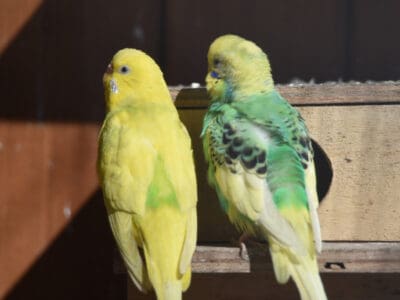
The Best Nest Boxes Birds Will Actually Use for 2022
What Do Turkeys Eat?
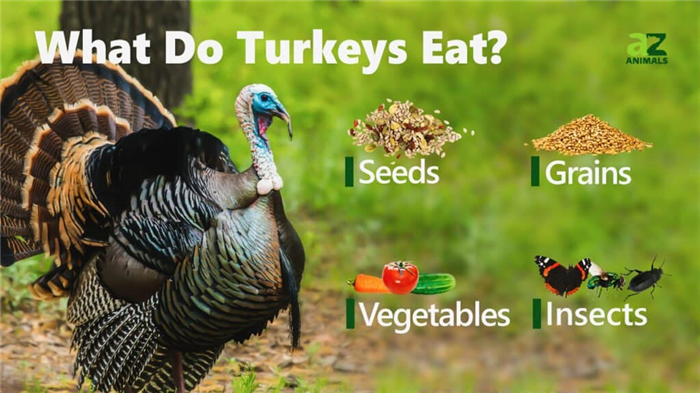
Turkeys eat seeds, grains, vegetables, and insects.
As omnivores, turkeys mostly eat seeds, grains, nuts, fruits, vegetables, and insects. But they also eat many surprising foods like fish, snails, and lizards. The birds spend all of their awake time hunting, scratching, pecking, and foraging for food. They look for food by turning over leaves and other ground debris with their feet. But they will even wade into ponds or streams, jump and flutter into trees and venture into city neighborhoods in search of the foods that make up their diet. Their favorite places to find food to eat in the wild include beneath fruit-bearing trees and bushes.
Even in the winter, turkeys eat well. They can keep their stomachs full and fat on their bodies in the winter months by adapting to the diet available to them. They have no problem feeding on pine needles, lichen, and whatever else they can find above or below the snow.
What Do Turkeys Eat in Captivity vs in the Wild?
Of course, what domestic turkeys eat on a farm or in a backyard is very different than what wild turkeys eat in the wilderness. While wild turkeys eat whatever they can find in the wild like the foods described above, farm-raised and backyard domestic turkeys usually eat commercial-grade feed bought in stores. This feed consists of the nutrients they need to maintain a good weight and size. It can also contain seeds, grains, and vegetables like corn. Captive turkeys eat insects and seeds if they can roam and forage on the farmland or other outdoor space.
Baby turkeys raised in captivity eat a different diet than adult domestic turkeys. A baby bird is given feed called a game starter or chick starter. This type of feed has a higher protein content than adult feed. Then, at eight weeks of age, the baby turkey is switched to a diet of grower feed. This food is as it sounds, designed to make the baby rapidly grow into a nicely plump and meaty adult for processing for human consumption.
Because humans provide the turkey’s diet in captivity, people also control how heavy these birds get. The farmer’s goal is to grow turkeys as big as possible. In the wild, turkeys eat whatever they can find from the time they wake until they sleep. But the diet turkeys eat in the wild does not make them rapidly gain weight like in captivity. This makes the wild turkeys look smaller and thinner to human eyes. But wild turkeys are usually able to maintain a healthy, natural size on their own. They find plenty of food and rarely starve.
What animals eat turkeys?
Just like turkeys are predators of insects, worms, caterpillars, lizards, snakes, and other small creatures, other animals are predators to these birds. Foxes, snakes, and raccoons are among their biggest threats in the wild. But any type of cat, from the domesticated cat to panthers, bobcats, and mountain lions, will make the birds a meal. The same is true of canines like domesticated dogs, coyotes, and wolves.
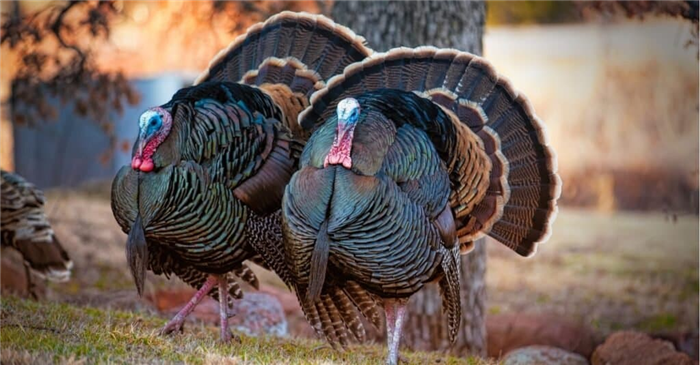
There are two families of turkeys: Phasianidae and Meleagrididae.
Because they are truly omnivorous, turkeys eat just about any plant or animal they find appealing at a given moment. Of course, their small mouths, beaks, and absence of arms mean turkeys generally eat a diet of foods easy for them to forage, peck, pull apart with their beaks and swallow. Most of these foods are small.
As chicks, healthy baby domestic turkeys eat diets with high niacin and protein content. They usually need about 28% of their diet to consist of protein for their first 8 weeks of life. Then, they need 20% to 21% protein in their diet through adulthood. Baby turkeys can forage on the grass on their own as young as two weeks old. But unlike other types of ground foraging birds, they do not need high calcium foods like oyster shells.
Wild turkeys need less protein than domestic birds because they are not fattening up for the dinner table. Instead of 20% to 28% protein according to their stage of life, wild turkeys only need about 12% to 14% protein. This keeps their weight in a healthy range.
21 of the foods omnivorous turkeys eat include:
- Corn and soybean domestic turkey feed
- Cracked corn
- Crabapples
- Grasses
- Seeds
- Nut meat
- Acorns
- Fruits
- Wildflower roots
- Small fish
- Berries
- Wheat
Share this post on:
AZ Animals Staff
AZ Animals is a growing team of animals experts, researchers, farmers, conservationists, writers, editors, and — of course — pet owners who have come together to help you better understand the animal kingdom and how we interact.
FAQs (Frequently Asked Questions)
What are turkey’s favorite foods?
As omnivorous foragers, turkeys eat just about anything they can find and scratch to the ground surface with their feet and pull apart with their beaks. They like a mixed diet of grains, fruit, roots, seeds, nuts, and living creatures like lizards, worms, snails, spiders, and other insects. In the winter, they eat anything they can find above or beneath the snow such as pine needles and lichen.
Can turkeys eat chicken feed?
Chicken feed is about 16% protein, good enough for a wild turkey to eat and stay healthy. But for domestic turkeys raised for their meat, the ideal protein content for their diet is 20% to 28%. This means that a meat-producing turkey needs extra protein added to chicken feed to fatten up to market weight.
What can you not feed turkeys?
There are many things that turkeys should not eat. These include wet bread which will stick in their intestinal tract and cause health problems and possibly death. Other dangerous foods include onions, raw processed meat, chocolate, dairy foods, processed or packaged foods, fruit pits, tomato, and eggplant leaves, avocados, dried or raw beans, and feeds made for livestock or other types of birds.
What do baby turkeys eat in the wild?
For the first month of their lives, baby turkeys eat mostly protein foods like mollusks, insects, and small reptiles. After this critical month of life, babies are just as omnivorous as adults. They start eating more seeds, vegetables, roots, fruits, grains, and nuts.
What can I feed wild turkeys in my yard?
The best foods to feed wild turkeys in your yard are the foods they would forage for themselves in the wilderness. These include acorns, nuts, berry-producing plants, grasses, ground eggshells, or sandy grit to help with digestion and freshwater. Never feed wild turkeys wet bread, birdseed, or foods made or packaged for human diets.
How do I attract wild turkeys to my property?
Acorns are a preferred food for wild turkeys and what they love to eat in winter, spring, summer, and fall. If you want to attract these birds to your property, offering plenty of acorns on the ground for them to forage is a great way to entice them in. You can also plant legumes, winter wheat, and clover or provide grapes for the wild turkeys to eat in winter and spring.
Do turkeys eat apples?
Turkeys love to eat apples. These fruits are also a great source of nutrition for the birds, providing fiber, vitamins, and minerals.
What Do Wild Turkeys Eat?

Melissa Mayntz is a bird expert, certified Master Naturalist, writer, and author with over three decades of experience. She’s published in several national magazines, including National Wildlife Magazine, Bird Watcher’s Digest, and WildBird Magazine. Melissa has studied hundreds of bird species around the world, traveling to Mexico, Central America, the Caribbean, the central Pacific, the Middle East, and more on birding expeditions.
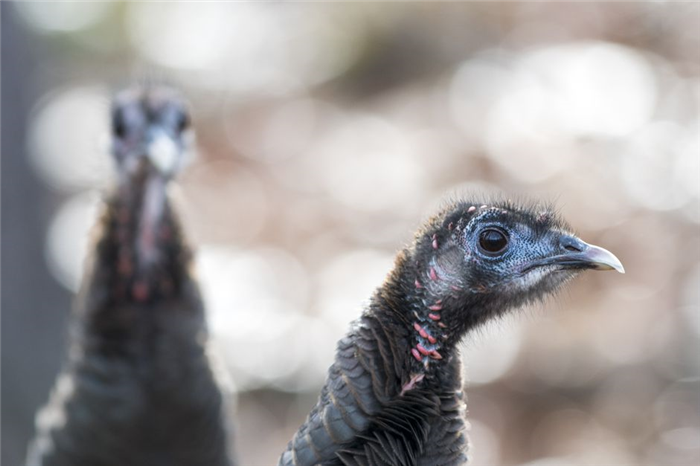
The Spruce / jskbirds
Turkeys are common guests on the dinner table, particularly for holiday meals such as Thanksgiving and Christmas, but what would wild turkeys eat if they could plan the menu? Learning about turkeys’ preferred foods can help birders better understand these birds’ foraging habits and where to find turkeys throughout the year when different food sources are available.
Foods They Eat
Wild turkeys are opportunistically omnivorous, which means they will readily sample a wide range of foods, both animal and vegetable. They forage frequently and will eat many different things, including:
- Acorns, hickory nuts, beechnuts, or walnuts, either cracked open or swallowed whole
- Seeds and grain, including spilled birdseed or corn and wheat in agricultural fields
- Berries, wild grapes, crabapples, and other small fruits
- Small reptiles including lizards and snakes
- Fleshy plant parts such as buds, roots, bulbs, succulents, and cacti
- Plant foliage, grass, and tender young leaves or shoots
- Large insects including grasshoppers, spiders, and caterpillars
- Snails, slugs, and worms
- Sand and small gravel for grit to aid proper digestion
In captivity or in agricultural settings, domestic turkeys—which are the same genetic species as wild turkeys—are often fed a special commercial feed formulated for game birds, turkeys, or poultry. These commercial feeds typically contain a mix of material to simulate these birds’ highly varied diets. Many turkey farmers also supplement their flock’s feeding with additional corn, grain, or other foods. The diet of domestic turkeys is often formulated to encourage heavier birds and faster growth to increase commercial profits. Some farmers, however, focus on heritage turkey breeds and offer a more natural diet for the birds to eat, including allowing them to forage freely through pastures and fields.
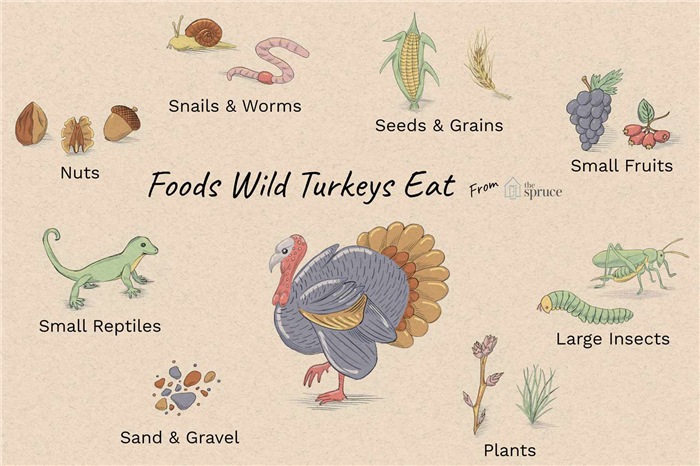
The Spruce/Jerry Lue
How They Eat
Wild turkeys forage constantly, always seeking out a new meal or snack. They are most frequently found feeding for several hours in the early morning just after sunrise, and will also feed more actively several hours before darkness. If food is scarce they will forage at any time of day, and when the flock includes young, hungry chicks, they are more often foraging throughout the day as well.
While foraging, a wild turkey will scratch with both feet, alternating to use each foot one at a time, then pecking at the ground to find whatever has been uncovered. They will occasionally pluck fruit or other foods directly off plants, but only rarely forage while perched in trees. A turkey swallows its food whole and the material is stored in the bird’s crop to be digested little by little with the help of the gizzard. After feeding, turkeys will often roost quietly for several hours while they digest.
How Their Diet Varies
Though turkeys will eat many different things, their diets can be influenced by a number of factors, such as:
- Season: Turkeys, like all animals, select food sources that are most abundant and easiest to reach. When different foods are abundant in different seasons, turkeys adjust their diets accordingly. In spring, they eat more fresh buds, grasses, and similar plant material, while insects and berries are more popular fare in summer. In autumn and winter, nuts, fruits, and grains make up the bulk of a wild turkey’s diet.
- Geography: A bird’s location greatly influences the foods it can find. Wild turkeys that are found in more forested ranges will have a higher percentage of nuts and buds in their diet. Turkeys that are in more open, desert regions may rely on more reptiles, seeds, and cacti for their nutrition. In agricultural regions, wild turkeys can often find much more grain to eat, and may even be considered a nuisance or pest in farmers’ fields.
- Age: Young wild turkeys can forage for themselves very quickly, and the hen will lead her brood to the best available food sources. For the first month of the birds’ lives, they eat a much higher percentage of insects, mollusks, reptiles, or other meat to get the protein essential for healthy growth. As they age they try a wider variety of foods and transition to a more varied diet depending on what is available. Adult wild turkeys eat mostly plant matter but still take advantage of any easily available food, including meat.
Feeding Turkeys
Wild turkeys are not common as backyard birds, but birders who live near wooded areas may find these large game birds foraging near their feeders. To provide an adequate feeding area for wild turkeys:
- Opt for ground feeding areas or large, low platform feeders that can accommodate these large birds and the flocks they forage in. Turkey scratching can damage turf or delicate landscaped beds, however, so plan a feeding area in a spot you don’t mind getting torn up or trampled.
- Provide cracked corn, millet, milo, wheat, oats, or other seeds and grains. Wild turkeys are not picky and will readily eat less expensive birdseed mixes or will eat the waste seed scattered beneath bird feeders. Leave leaf litter available for the birds to forage, and leave windfall fruit and nuts on the ground for turkeys to find.
- Plant oak or beech trees along with grapes, cherry trees, crabapples, hackberries, and similar trees and shrubs to provide an inexpensive, natural, renewable food source for wild turkeys. Native plants are best because the turkeys will recognize them more easily, and the plants will require less care to produce abundant crops to feed a hungry flock.
- Minimize or eliminate herbicides and insecticides that could contaminate foods wild turkeys eat, particularly during the summer when young birds are more susceptible to toxic chemicals. Instead, allow turkeys to forage freely and they will eat many bothersome insects.
Wild turkeys are large game birds with healthy appetites, and they sate those appetites with a wide variety of different foods. Birders who know what wild turkeys eat can more easily plan how to find these game birds in the field by visiting areas where food is abundant. It is even possible to provide a spot for wild turkeys at a backyard bird-friendly buffet instead of focusing on these birds at the center of a holiday dinner table.
5 Food Sources Every Turkey Hunter Should Know
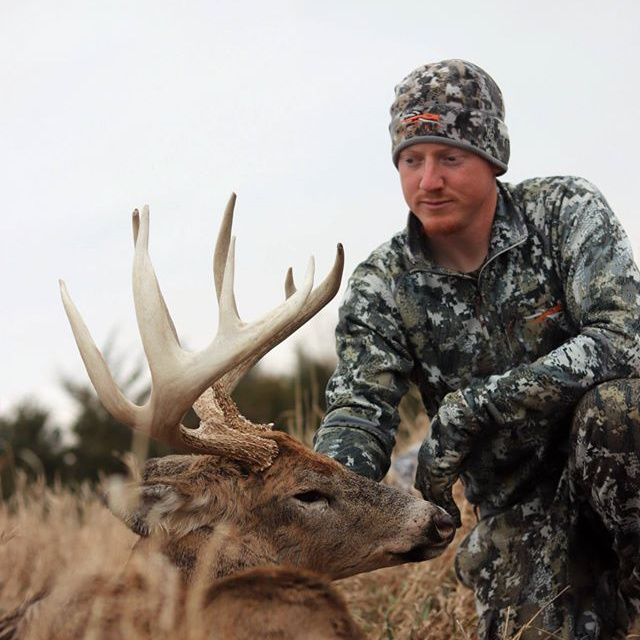
Proactive deer hunters plan their hunting strategy and location with destination food sources in mind. Oddly enough, for many turkey hunters, myself included, a turkey’s diet plays little to no role in deciding where to focus their hunting efforts. When the turkeys go silent, flocks split up, and the going gets tough, keying in on likely food sources is a good strategy to keep in mind.
To learn more about a turkey’s diet, I consulted Dr. Mike Chamberlain, wildlife researcher and professor at the University of Georgia.
“Turkeys are true omnivores and they tend to feed heavily on items they can easily obtain,” Dr. Chamberlain said. “So you tend to see birds using a wide variety of food sources most of the year, with the exception being during winter when those sources become most dominated by hard mast and waste grains. Later, plant and insect communities can change dramatically across the spring turkey season, which will result in birds often shifting what they are consuming to take advantage of an easy and profitable prey source.”
It’s important to keep in mind that the availability of these food sources will vary greatly depending upon your state’s turkey season dates, agricultural availability, and the spring green-up cycle. Of these food sources, here are five staple food sources that turkeys can depend on each spring.
Hard Mast “Acorns and hard mast are important to turkeys throughout the species range,” Dr. Chamberlain said. A lesser-acknowledged wildlife favorite is the American beechnut. Like acorns, beechnuts can be a critical food source for birds throughout winter and into early spring when other food sources aren’t yet available on the landscape. Other hard masts that Eastern birds regularly consume include chestnuts, seeds of white ash, ironwood, hawthorn, witch hazel, and flowering dogwood.
In many Western landscapes, a Merriam’s diet and environment are both dominated by ponderosa and other pine species. According to Chamberlain, like most mast, pine seeds are a staple on a Western bird’s dinner plate. Mature pine trees offer great roosting cover, produce edible hard mast, and often facilitate a good environment for turkeys to bug. Rios also rely on hard mast to supplement their diet. A few favorites include acorns, skunkberry, doveweed, hackberry, and cedar elm.
Soft Mast Soft mast refers to the fruits produced by woody plants like shrubs, trees, and vines. Depending on your location, soft mast may become available late in the turkey season as plants begin flowering and producing fruits.
For states with early openers, soft mast can be critical to a bird’s survival throughout winter and early spring. Fruits from last year’s growing season have dried up and provide a valuable food source for wintering and early spring gobblers. Eastern turkeys may consume fruit from black cherry, wild grape, and spicebush plants, while their Western counterparts browse on fruit from Manzanita, skunkbrush, and juniper plants.
Native Grasses “Grasses, in general, are important to turkeys as they provide succulent green vegetation throughout much of the year,” Dr. Chamberlain said. This is especially true in early spring when green-up has not yet occurred and other food sources are not yet present. Turkeys forage on grass seeds as well as the first tender green shoots.
Native grasses not only provide a readily available food source for spring turkeys, but they also provide great security cover. Young poults thrive in grassland environments, which also provide great bugging opportunities. A few prominent native grasses include big and little bluestem, Indiangrass, switchgrass, buffalo grass, Eastern gamagrass, blue gamma grass, and needlegrass. For those in pursuit of Osceolas, popular grasses include panic grasses, carpet grass, and chufa.
Forbs Forbs are broad leaf flowing plants that lack woody stems. Many hunters casually refer to some forbs as weeds, but they have an important place in a turkey’s diet. Wild clover, sunflowers, milkweed, and ferns fall into the forb category and are a popular food source for many game animals, including turkey. Merriam’s and Rios of the West often seek out alfalfa, sweet clover, sunflower, and vetch.
Invertebrates “Insects are critical to turkeys, both for adults and poults. Newly hatched poults eat only insects for the first few weeks of life, so abundant insects are critical to broods. Likewise, adults obtain protein and water from insects they consume throughout spring and summer,” Dr. Chamberlain said.
Obviously, insect and invertebrate availability will vary from region to region, but one thing is certain, wild turkeys are opportunistic and can eat just about anything that crawls past their beak. Dragonflies, grasshoppers, caterpillars, snails, beetles, worms, and salamanders are all fair game.
“Oddly enough, I once watched a hen stand over a mud hole that was loaded with tadpoles and literally ate so many that her crop was distended with them. I’m not sure you could have crammed another tadpole in that bird’s throat,” Dr. Chamberlain concluded. “Similarly, I’ve also watched several toms wading in shallow water, catching crayfish. They’d duck their heads into the water just like an egret.”
What do Turkeys Eat?
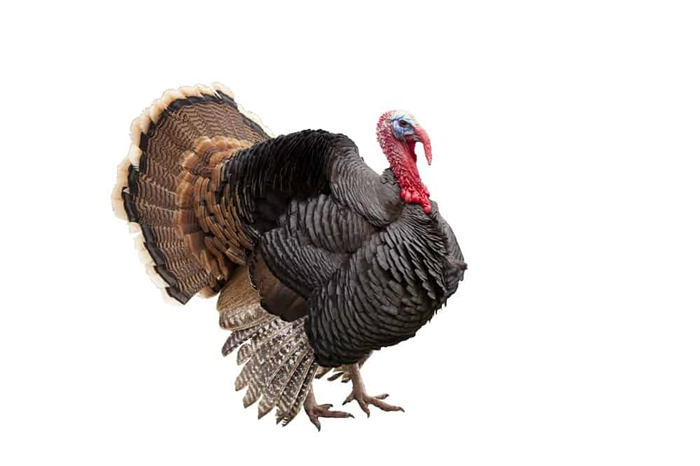
Ready to take the plunge and raise backyard turkeys? Before you do, spend a bit of time researching, including understanding just what they eat.
What do turkeys eat? Turkeys love to eat. Whether it’s cracked corn, freshly fallen crabapples, or even jumping grasshoppers, turkeys are always on the hunt for their next snack.
If you decide to raise turkeys in your backyard, be prepared to have multiple food sources. In addition to an all-encompassing turkey feed, provide places for your turkeys to forage, including under fruit trees or in shrubs.
A more natural habitat will allow turkeys to thrive, making them happier and plumper.
Wild Turkeys (what do they eat)
Wild turkeys are omnivorous and will eat a variety of different foods including plants and animals.
For plants, wild turkeys love acorns, walnuts, and hickory nuts. They will eat these nuts either cracked open or whole as well as plant matter.
Wild Turkeys will also eat corn, wheat, seeds, and grain, as well as berries and crabapples.
As for meat, wild turkeys will eat insects such as spiders and caterpillars as well as snails and small lizards.
Backyard raised or farm-raised Turkeys (what do they eat)
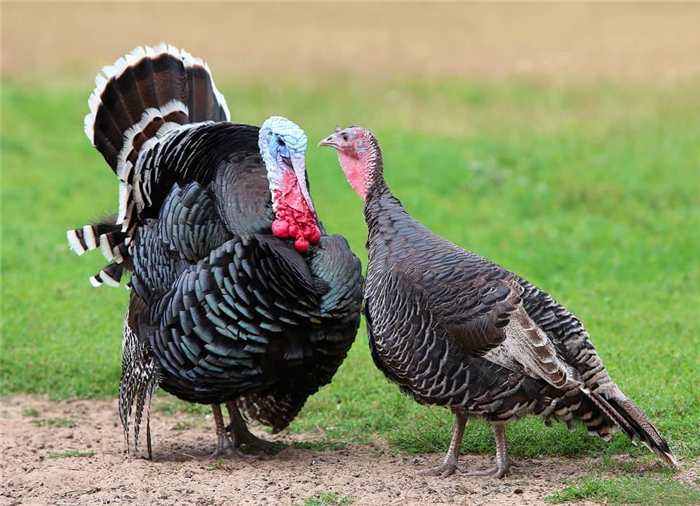
If you have backyard turkeys, you will want to mimic what they eat in the wilderness.
Commercial-grade food feed is recommended as it will have all the nutrients turkeys need to stay healthy.
You can also supplement this feed with corn and grain.
If you have space, you can also allow your turkeys the opportunity to partially forage for themselves.
This is when turkeys have access to a larger area and can naturally feed on insects and vegetation.
Different types of turkey feed
Turkey babies, or poults, need their own special feed. Be sure to use a game starter or chick starter that has extra protein in it.
Once a turkey is eight weeks old, you can switch to a grower feed. Use a turkey feed specially for this, as chicken feed will have less protein in it.
If you are growing turkeys for slaughter, they will be ready after the six-month mark.
How to feed and water turkeys
Turkeys will eat constantly if you let them, so be prepared for constant foraging. Set up multiple food sources where nutrients will be placed.
While turkeys eat, they often scratch their feet. As a result, their feeding grounds will quickly be torn up.
Be prepared for this, so create feeding grounds that are on dry dirt where there won’t be any cause for damage.
For water, provide large water tubs that are low to the ground. This will allow turkeys to easily sip their water. Make sure the water is fresh and clean.
If you have space, it’s a nice idea to plant fruit trees, such as crabapple and cherry trees. These will provide an abundant, natural food source for your turkeys to forage under.
If you have baby turkeys or turkey poults, you will need to keep them safe. Like chicks, poults need a lot of heat.
Keep them inside for the first eight weeks, gradually giving these young birds time in the sun before allowing them to be outside full time.
For turkey poults, don’t leave large water containers out. These tiny poults can easily fall into the water and won’t be able to escape.
Instead, you can use bottle feeders or very shallow water dishes.
Turkey poults should be given special feed that is high in protein for the first eight weeks before being switched to an adult, growing feed.
Advantages of raising backyard turkeys
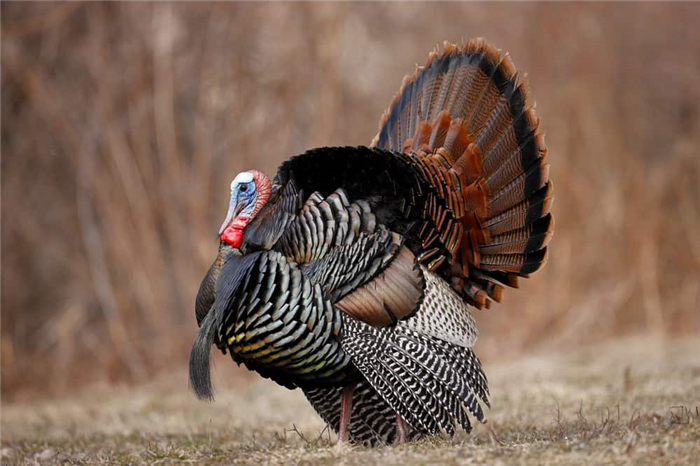
Most people naturally think about raising backyard chickens, but when it comes to cleanliness, turkeys have them beat.
Turkeys are far cleaner and food and hay won’t be scattered everywhere.
While you might think of turkeys in North America as being simply Thanksgiving and Christmas dinners, in reality, they can be enjoyed year-round. Backyard-raised turkeys taste delicious and are a great, healthy addition to any diet.
Finally, if you want a bit of personality in your backyard, turkeys are the way to go. They are quite social and sometimes even mimic dogs in their friendliness and loyalty.
You will need quite a bit of space for turkeys, however. Not only do they like to roam, they can become quite noisy, especially male turkeys, also known as toms.
The more space you have between your backyard and your neighbor’s the happier everyone will be.
Related Questions
Can turkeys smell you?
Turkeys have very few taste buds (just a few hundred compared to a human’s 10,000). As a result, turkeys have a very weak sense of smell.
Can turkeys hurt you?
Wild turkeys can be quite aggressive, especially if they are protecting their food source or feel intimidated by a larger animal.
When turkeys feel threatened, they can attack you. This can involve the use of their sharp beaks and talons.
Furthermore, turkeys can flap their wings quite quickly, causing a lot of confusion.
It’s best to stay calm around turkeys and not come between them and their food source.
What is the best bait for wild turkeys?
Turkeys love cracked corn, oats, and ryegrass. You can spread these foods out and turkeys will start to forage for them, quickly becoming habitual in their love of food.
How do you attract turkeys to your land?
If you have wild turkeys near your property but want them on your land, create a food trial. Layout corn, oats, or ryegrass and tempt them to where you want them to be.
You should start looking for adult wild turkeys in early spring. Look for large trees and underneath them, you should be able to see droppings and feathers. This is a sign that turkeys are nearby.
Do wild turkeys eat ticks?
Yes, wild turkeys eat deer ticks. However, it is not their main source of food and thus is not an efficient way of controlling the tick population.
Recommended Post: Feeding Domesticated Turkeys, other feeds should never be a substitute.
Conclusion
Turkeys make excellent backyard birds. You can feed your turkey flock an assortment of natural foods including seeds, grains, apples, and even bugs.
And after being exposed to a nutritious diet, your turkeys will end up being quite delicious.
Feeding Wild Turkeys the Natural Way
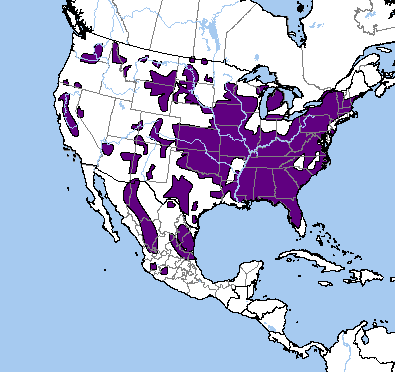
Wild Turkey’s Range provided by Nature Serve
- Plant Native Oaks: Acorns are a key food source for wild turkeys. By planting native oaks, like red oak, chestnut oak and black oak, you’ll supply them with plenty of acorns to eat. Turkeys eat acorns in fall and winter and in many oak forests you can even notice a V-shaped scratching in the leaf litter (a sure sign of wild turkeys). Many other wildlife species rely on acorns as a food source, and oak trees are also important caterpillar host plants and nesting areas for birds, so you’ll be helping out more than just turkeys when you plant native oaks.
- Plant Other Nut and Berry-Producing Plants: In addition to oak acorns, other staples of the wild turkey diet include beech nuts, pecans, hickory nuts, crabapples, and hackberries. By planting native nut and berry-producing plants you’ll provide turkeys with the natural foods they’ve consumed for thousands of years. Other planting suggestions include black cherry trees, blueberries, wild grapes and dogwood. Wild turkeys consume cacti fruits in arid areas and like many species of wildlife, will even consume poison ivy berries too.
- Offer Seeds and Browse: Turkeys browse on plant buds and shoots in the early spring and feed off fern fronds, club mosses, and weeds such as burdock, especially when there is a lot of snow cover and other foods are hard to find. Grasses, sedges and many wildflowers provide wild turkeys with seeds to eat. We don’t encourage attracting turkeys with birdseed from feeders, mostly because artificially feeding turkeys causes them to lose their natural fear of people*.
- Grit and Gravel: Turkeys will swallow grit to help them digest their food. Offer grit by placing a shallow bowl filled with sand, fine gravel, sterlized ground eggshells or ground oyster shells. Or just keep a patch of sandy soil free of plants.
- Stop Using Pesticides: Aside from the direct harm you can cause wildlife by using pesticides, by not using these chemicals you’ll make sure that turkeys have plenty of much-needed protein in the form of insects. About ten percent of an adult wild turkey’s diet consists of small animals, including insects such as stink bugs, grasshoppers, and ground beetles, as well as snails, slugs, worms, spiders and other invertebrates. Turkey chicks, called poults, begin foraging shortly after hatching for invertebrates, which make up a large portion of their diet as they grow. Turkeys will actually help keep invertebrate pests in check for you, and there are many organic gardening techniques you can also use to control pest outbreaks.
- Leave the Leaves: By leaving some of autumn’s fallen leaves instead of throwing them all away, you’re providing habitat for the small animals that are a key part of a turkey’s diet. Turkeys forage for invertebrates in the leaf layer and also enjoy eating salamanders, frogs, snakes, and lizards that also live in the fallen leaves.
Bonus Tip: Provide a water source in addition to providing natural food sources. By providing a backyard pond or even a birdbath placed directly on the ground you’ll supply clean drinking water for the turkeys.
This year, learn more about turkeys than just the best recipes cook them. Discover the intriguing natural history of the wild turkey, make turkey-inspired crafts and laugh at amusing turkey trivia.
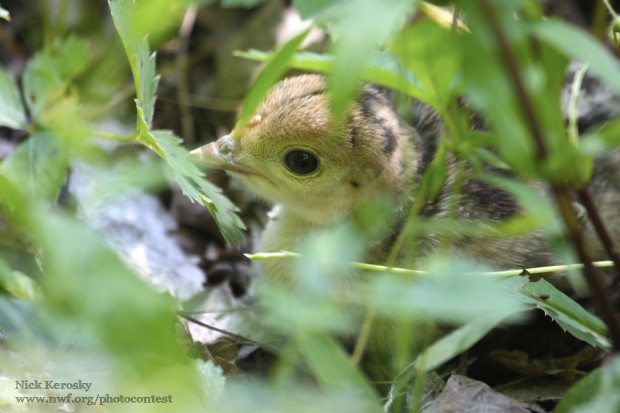
Wild Turkey Chick. Credit: Nick Kerosky.
*Male wild turkeys are territorial and can occasionally become aggressive, especially during the spring breeding season. This often happens when wild turkeys are being artificially fed with feeders and have lost their natural fear of people, so avoid doing that. If turkeys are cleaning up spilled seed from songbird feeders, take those feeders down. If you have plenty of native plants in your yard, all the birds will have plenty of natural foods to eat.
If you encounter a turkey that’s got something to prove, assert your dominance by standing your ground and chasing it away by walking towards it with a broom or rake or spraying it with a garden hose to remind it where it fits in the pecking order. Male turkeys are large and intimidating and do have sharp spurs on their legs, but generally pose little actual threat of harm to humans. If you find that the wild turkeys in your yard are too much trouble, we recommend putting automatic sprinklers in your yard to scare them off whenever they show up. They also don’t like larger dogs and avoid yards where they are present.
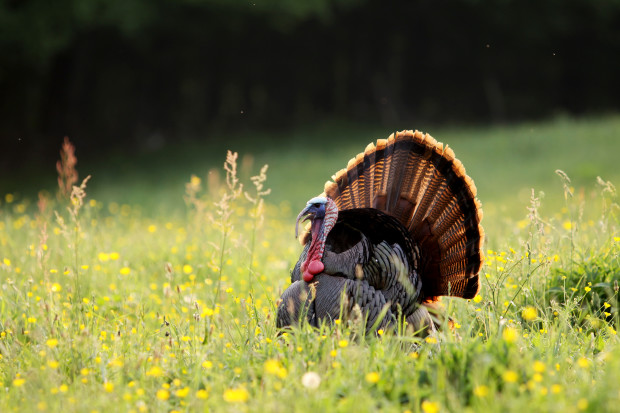
A wild turkey in a field of buttercups. Photo by National Wildlife Photo Contest entrant Monte Loomis.
Sign up for our free Garden for Wildlife newsletter. You’ll get great wildlife gardening tips and learn how to have your yard your garden recognized as Certified Wildlife Habitat.
